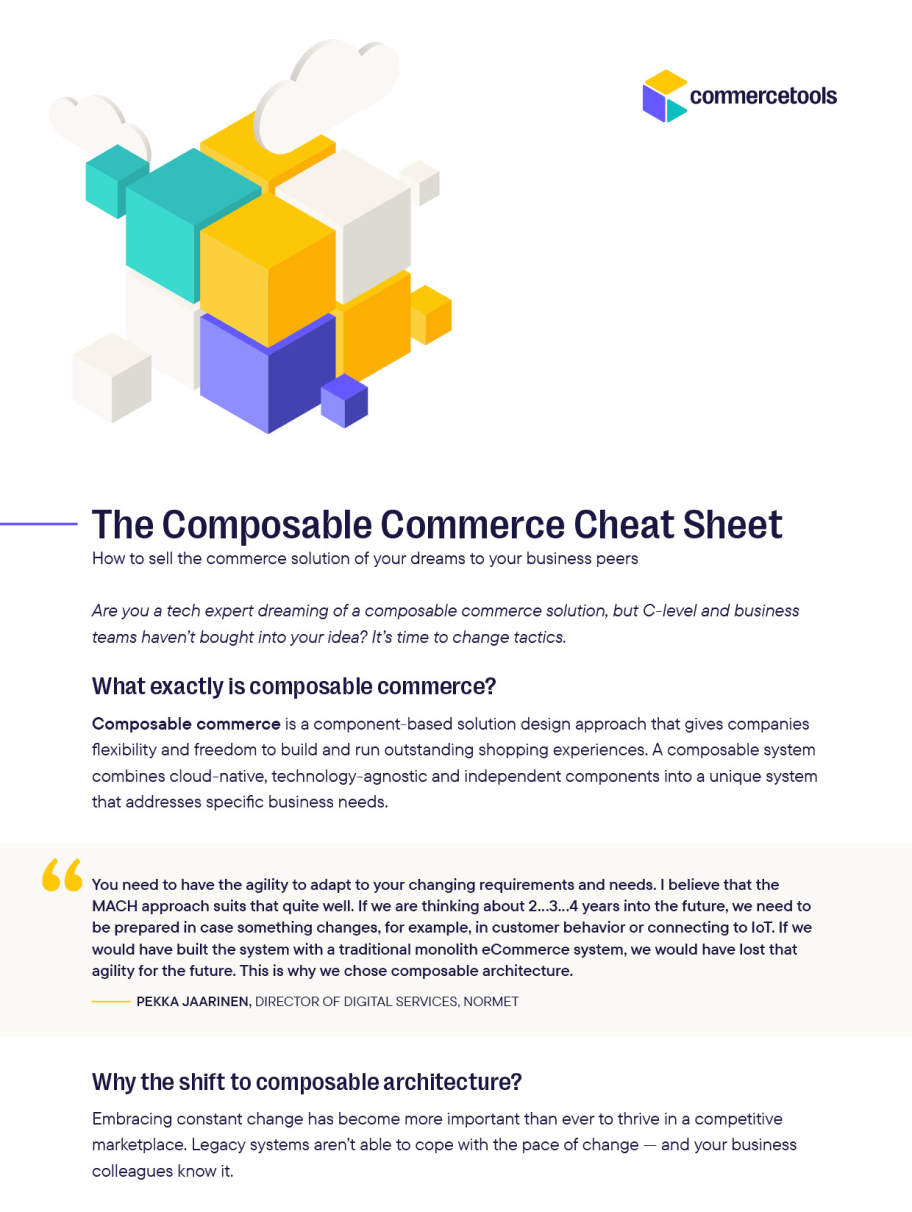

Sell composable commerce to business peers in five steps.
Are you a technical expert dreaming of a composable commerce solution but don’t know how to convince your business peers?
This cheat sheet helps you create a compelling story in five steps. All the benefits of composable commerce are translated into business speak, including inspiring soundbites and metrics from commercetools customers.
What’s composable commerce and why business leaders should consider it.
Five steps to creating a compelling story about composable commerce with the business audience in mind.
Top reasons and benefits to implementing composable commerce.
How composable commerce helps B2B and B2C businesses increase revenue and operational efficiency.
commercetools credentials as a leader in composable commerce, attested by multiple market analysts.
Ready to dive deeper into composable commerce?
Discover How Composable Commerce Can Transform Your Business